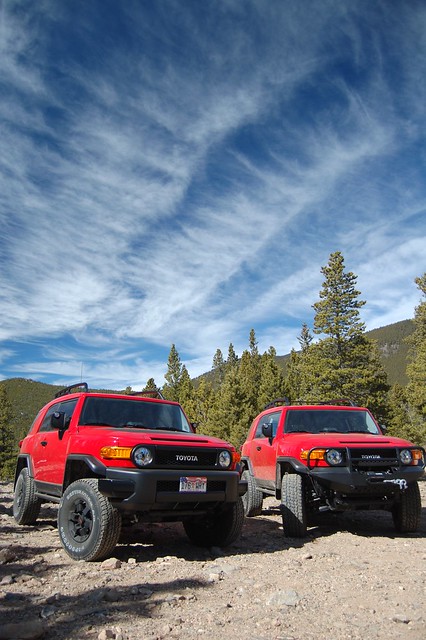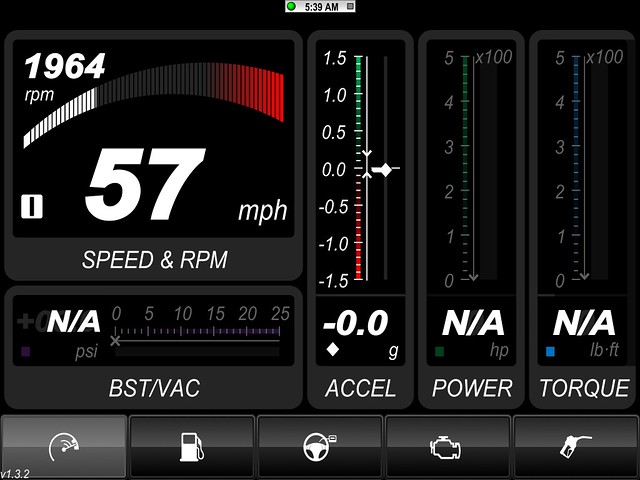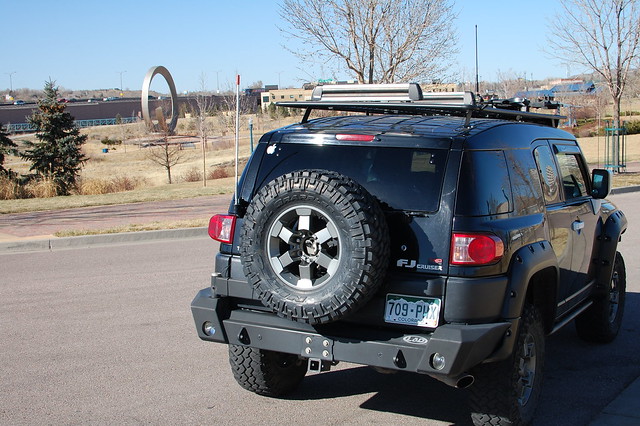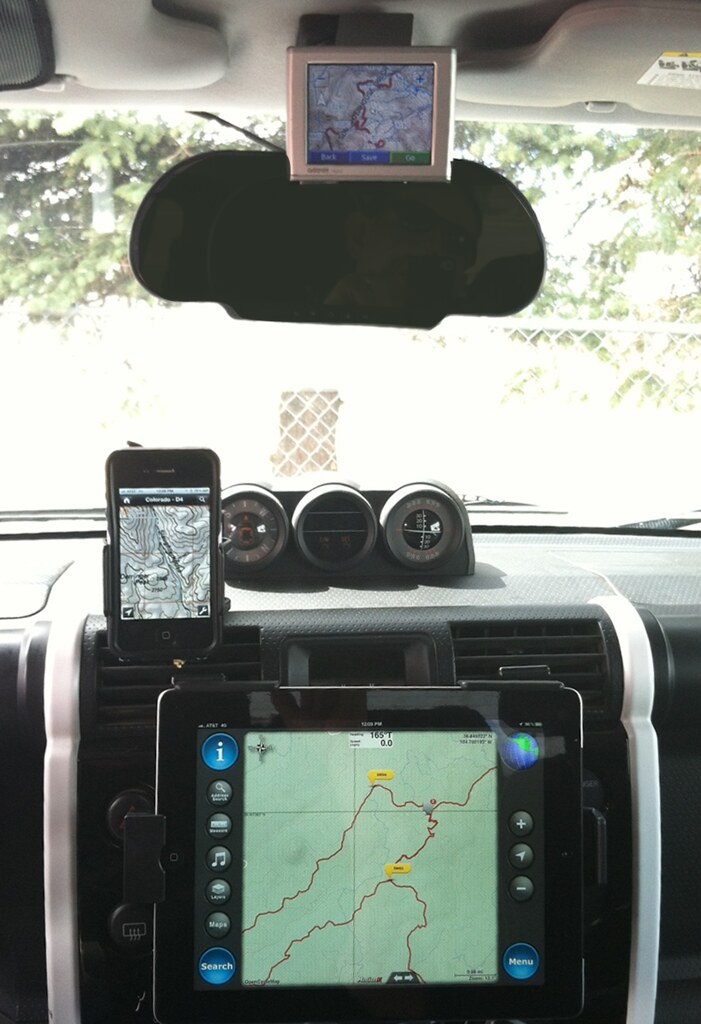April 2012
- Details
- By Shane Williams

In the off road world, more specifically the FJ Cruiser world, there are many firsts. The first time you see an FJ in the wild, your first test drive, your first FJC event. Who can forget the first trail you took your FJ on, the first modification you made, or the first time you had to use A-Trac?
Several companies created custom, one-off red FJ Cruisers since 2007, and many enthusiasts have longed for a production ‘real’ red FJ Cruiser. As we reported in late 2011, Toyota finally answered our requests with the 2012 Trail Teams edition: The first production ‘Radiant Red’ FJ Cruiser.
Special Edition FJC’s are nothing new, they’ve been around nearly as long as the FJ. 2007 : Black Diamond TRD SE; 2008 : White TT SE; 2009/2010 : Sandstorm TT SE; 2011 : Army Green TT SE (and NSSE); and finally the 2012 : Radiant Red TT SE. With so many great previous Special Edition FJ Cruisers, why is everyone so excited about the 2012 version?
- Details
- By Shane Williams
 Many FJ Cruiser lovers, like auto enthusiasts of all types, really love the details about their trucks. How tall is your lift? What spring rate do you run? How is the mileage with your new tires? The list of questions we bounce of one another at any gathering can (and usually does) go on forever.
Many FJ Cruiser lovers, like auto enthusiasts of all types, really love the details about their trucks. How tall is your lift? What spring rate do you run? How is the mileage with your new tires? The list of questions we bounce of one another at any gathering can (and usually does) go on forever.
In 2006 when the FJC first came out, ‘consumer’ level data readers for your truck were few and far between. While you could drop hundreds (or thousands) on PDA or laptop enabled ODBII scanners, they were clunky and difficult to use. The common device used at the time is still very popular today: the Scanguage II from Linear Logic.
The Scanguage is a great little computer that provides a wealth of information to the driver. Everything from mileage, power, and various engine performance metrics are viewable with the device. It’s an excellent option for a basic, ‘ultra-compact’ computer that has a fairly affordable price tag. Of course, the two line LCD does have limitations. You can only view a couple of gauges at a time, and the operation can be a little cumbersome. Plus, it just doesn’t have the pizzazz of the newer options that we’ve been playing with.
It’s been a couple of years since we first saw the KIWI from PLX Devices, but from the first time we imagined the concept we were excited. The KIWI is basically a WiFi or Bluetooth enabled ODB-II scanner that makes it possible to view all engine diagnostic information with your smartphone (or iPad) completely wirelessly. The device could not be easier to install or use: we had our demo unit up and running in about 5 minutes.
- Details
- By Shane Williams
 We’ve had the LoD Rear bumper installed for nearly 18 months and overall we’re very happy with it. Before we get into our final thoughts, let’s review the details of this bumper. This version is the full bumper with spare tire carrier, jerry can mounts, and trail rack (we don’t normally run with the trail rack or can mounts attached). The bumper can carry up to a 37” tire, but we’re running near stock size 285/70R16 Nitto Trail grapplers. It’s constructed with 3/16” steel and has held up very well on our adventures all around the west since we installed it in 2010.
We’ve had the LoD Rear bumper installed for nearly 18 months and overall we’re very happy with it. Before we get into our final thoughts, let’s review the details of this bumper. This version is the full bumper with spare tire carrier, jerry can mounts, and trail rack (we don’t normally run with the trail rack or can mounts attached). The bumper can carry up to a 37” tire, but we’re running near stock size 285/70R16 Nitto Trail grapplers. It’s constructed with 3/16” steel and has held up very well on our adventures all around the west since we installed it in 2010.
The carrier is integrated with the door, so when you open the door the carrier goes with it. The entire assembly has been rattle free for the most part, the adjustable bump stop has had to be tweaked a couple of times to eliminate all noise from the bumper. The heavy duty 1.5” hinge pin has performed very well, although it’s noticeably more ‘sticky’ in the winter due to lower temperatures. The rear door is much more difficult to open & close in the winter than in the summer, and the entire assembly is (obviously) heavier than the stock door & carrier.
- Details
- By Shane Williams
 We installed the original iPad in our TRD just over a year ago because we knew it would be great for on-road navigation, off road maps, and music. We looked through many of the apps that were available at the time for a suitable backcountry, no internet service option and EveryTrail was the only app that came close. While EveryTrail still works fairly well, they haven’t yet created an iPad native version yet, so the 2X iPhone version on the new iPad is starting to look a little dated.
We installed the original iPad in our TRD just over a year ago because we knew it would be great for on-road navigation, off road maps, and music. We looked through many of the apps that were available at the time for a suitable backcountry, no internet service option and EveryTrail was the only app that came close. While EveryTrail still works fairly well, they haven’t yet created an iPad native version yet, so the 2X iPhone version on the new iPad is starting to look a little dated.
When FunTreks introduced their Data Cards last fall (See our October 2011 issue), which include the GPX tracks and waypoints for all trails in their books, we began looking for a better option to display the data and give us great terrain-based maps. While there are a number of applications that allow you to download maps for offline use (See “Other Apps” below), finding one that supports the IMPORT of GPX data directly into the app has been a challenge.
Thanks to help from users of ExpeditionPortal.com as well as other sites, we found a couple of apps that seem like they were built specifically for our FJ’s unique iPad Integration.




